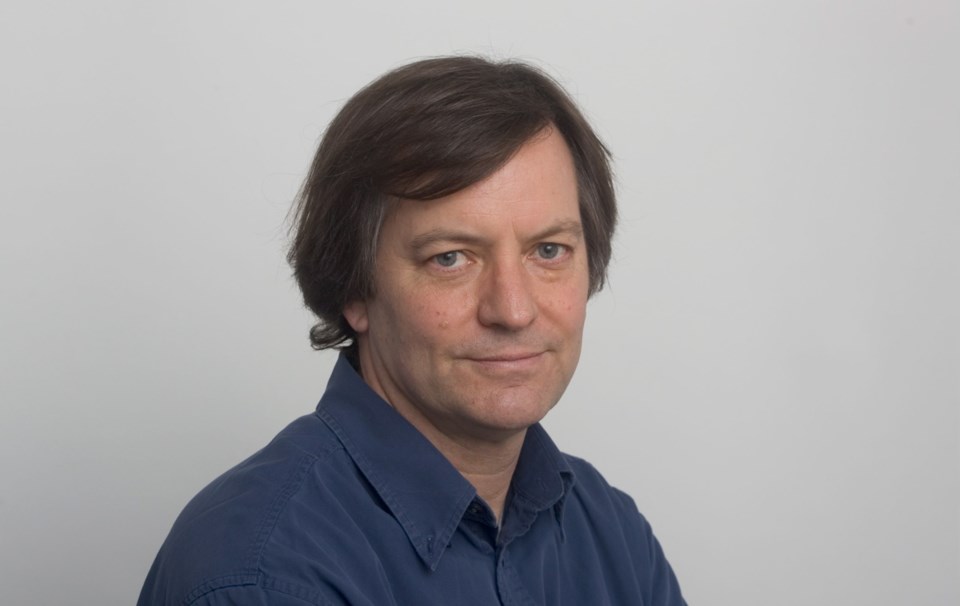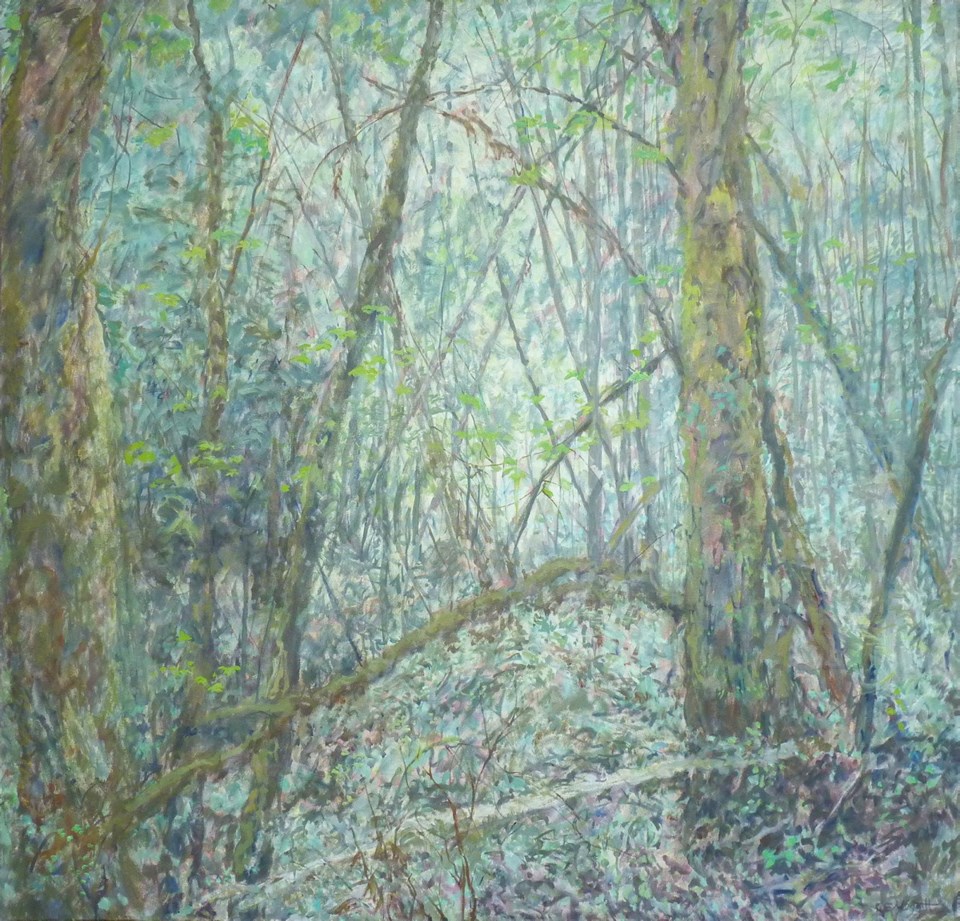 Anne Meggitt, whose paintings are on show at Martin Batchelor Gallery, was born in 1930. After graduating with a national diploma in design, specializing in painting, from Reading University in England, she led a peripatetic life, spending the better part of 17 years in North Borneo. When she was transplanted in 1977 to Regina, it was a shock to her world view and artistic eye.
Anne Meggitt, whose paintings are on show at Martin Batchelor Gallery, was born in 1930. After graduating with a national diploma in design, specializing in painting, from Reading University in England, she led a peripatetic life, spending the better part of 17 years in North Borneo. When she was transplanted in 1977 to Regina, it was a shock to her world view and artistic eye.
“I’m not a city person,” she told me. “Coming to Regina, I bought a whole lot of topographical maps, and looked for coulees that might have trees in them.” Despite the relative absence of trees, her time on the Prairies was productively spent, including four sessions at the annual Emma Lake Artists’ Workshop. She arrived in Victoria four years ago and now revels in “the abundance of wonderful and different foliages. It’s so paintable,” she said.
Her paintings, which surrounded us at the show at Martin Batchelor Gallery, look deep into the woods, and she chooses dense and complicated compositions from what she sees before her. Originally trained in the traditional way, beginning by sketching and rendering what was before her, now when she sees something that captures her attention, she comes to terms with it through photography.
“I zoom in and take some pictures of what I think I like. I stack a column of six, up one side, and then down six, and go on like that. Later, I print them out in black and white and glue them together. I try to focus on the reason why I liked it in the first place, and decide how I want to organize it,” Meggitt explained. “That’s how I get started.”
How does one choose a composition from all that vegetation?
“The black and white is only for getting the shapes,” she told me. “Tonality is probably more important to me than the colour.” Her canvas is primed with white, and she lays out a few indications in red. These first lines are later covered up and never show through. As she proceeds, “the colour changes, but the tonality has to be absolutely right.”
Standing at her easel, she begins painting in a loose way, brushing in her memories almost at random.
“Painting is drawing,” she said. Every brushstroke is drawn into place, each mark an independent line or gesture. “When I’m painting the pictures, they look quite fragmented. But when you stand back, they come together.
“I don’t go from light to dark. I just concentrate on the mid-tones, mostly, then add in the dark and the light. I just enjoy seeing ‘what’s going on here?’ It’s leading me on.”
There is a consistency in her paintings, in scale and in focal length. And her colour choices are distinctive.
“Once I start,” she said, “having chosen my first colours, I mix everything, choosing if they go together well. That’s just part of me. I don’t have to think about it any more.”
Her teacher of painting back in Reading was Anthony Betts, a student and friend of Walter Sickert. “He taught me something,” she acknowledged.
Meggitt uses an extensive range of greens.
“There must be more green colours than any other colour in the world,” she ventured, and called herself “a compulsive mixer of colours. I never use any colour straight from the tube. I never use green, but always mix my own.”
So I asked what colours are on her palette. She told me there are about 10, always the same.
“My blue is usually ultramarine. I don’t like that phthalo stuff, but I do use cerulean blue.” For yellows, she favours lemon yellow and cadmium yellow medium.
“Certain colours help your greens to be happy, but I don’t use yellow much in large areas. It’s a colour that makes me uneasy. Years ago, I went around the garden digging out all the yellow flowers,” she said with a laugh.
When I asked about the earth colours, she threw her hands wide. Burnt and raw umber, burnt and raw sienna, and yellow ochre are constantly part of her mix. But I could tell I was asking her to be too analytical.
“I just throw in whatever. When I am mixing them, they have to be just right and I can tell by gazing at them.”
The forest of marks swirls before her, and she adds the contrasts of highlights and dark shadows.
“If it’s needed, it has to be put in. I just get led on,” she confessed, “so I don’t always know where I’m going. And I don’t want to know.”
For Meggitt, the most important thing is knowing when to stop: “I stand back and ask: Does it work with the rest of the painting?” When the balance is right, she’s finished.
Her pleasure is evident is these immersive landscapes. She finds delight in trips to Tofino, and to McKenzie Bight, and even right outside her window in Fairfield.
“I am really beginning to enjoy my painting more since I came here,” she beamed. “In Regina, I really had to look for something. It was heavy going. But here, out the window and everywhere I walk, I just can’t believe the marvellous work that has been done with the planting.”
I suggested she has years of pleasure ahead painting the trees of the capital region, and Meggitt replied: “Really now, I’m just keeping my energy for painting. I do it every weekday, walking over to my studio every morning. It’s perfect, very perfect.”
Anne Meggitt: Nature is Imagination, at Martin Batchelor Gallery, 712 Cormorant St., 250-385-7919, until Sept. 28.



